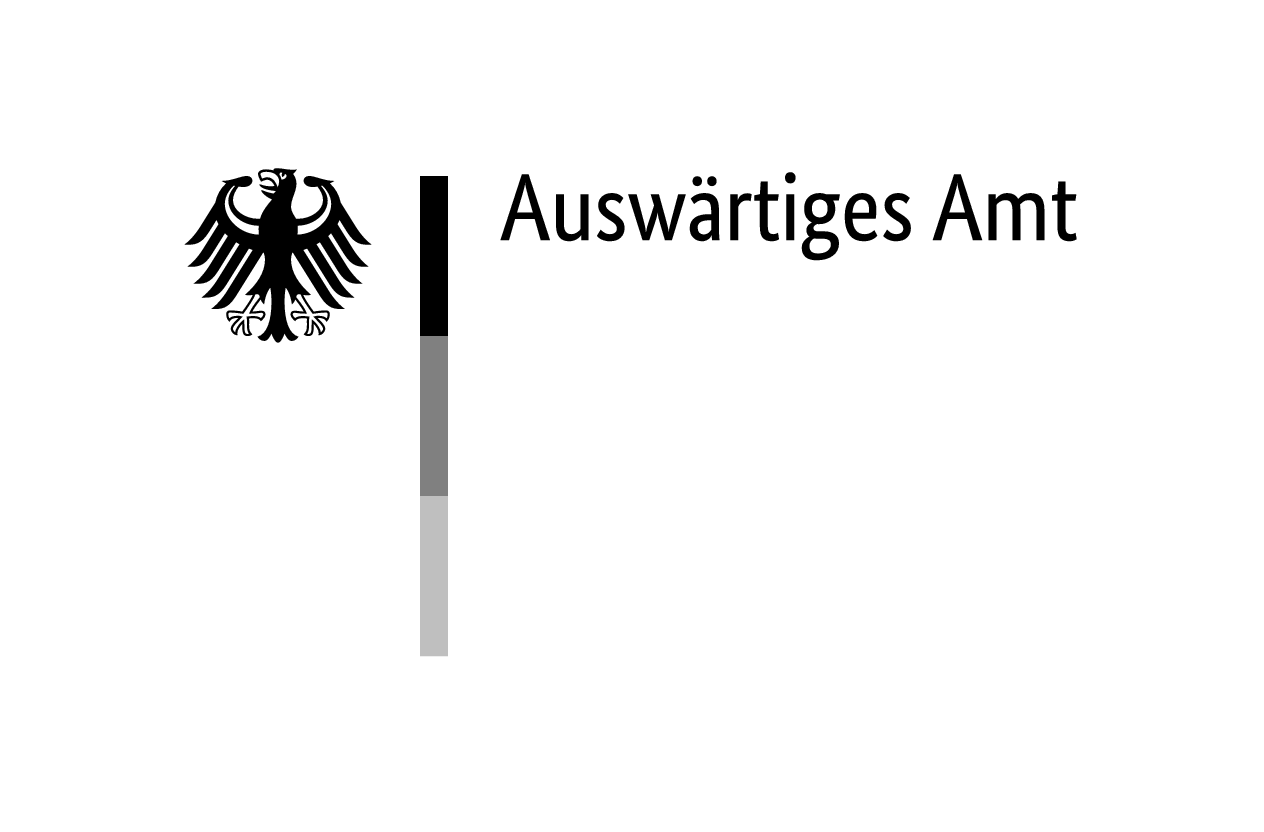The ‘Reich Central Office for Combating the Gypsy Nuisance’, founded in 1936, located in the Berlin Reich Criminal Police Office (RKPA) in 1938 and incorporated into the Reich Security Main Office (RSHA) in 1939, was the central authority for the persecution of Sinti and Roma in the German Reich.
Foundation and Central Tasks
The institutional forerunner of the Reich Central Office was the ‘Security Police Intelligence Service in Relation to Gypsies’ (hereafter ‘Gypsy Policing Office’). Established in 1899 in the Munich Police Headquarters, this agency had gained effective nationwide responsibility as a supra-regional data collection and information centre financed by all the states and provinces of the Reich. Participants in the tenth meeting of the International Criminal Police Commission (ICPC) in Vienna (17 to 21 September 1934) agreed to establish an ‘International Central Office for Combating the Gypsy Nuisance’.
In the German Reich, the International Central Office worked primarily with the Munich office, whose nationwide responsibility for international matters was formally established as part of the reorganisation and centralisation of the Criminal Police: Reich Minister of the Interior Wilhelm Frick (1877–1946) named the police directorate in Munich as the responsible authority in his circular decree on the ‘International Central Office for Combating Gypsy Nuisance’.1Circular decree of the Prussian Ministry of the Interior, 5 June 1936, “Internationale Zentralstelle zur Bekämpfung des Zigeunerunwesens”, in: Kriminalpolizei. Sammlungen für die kriminalpolizeiliche Organisation, Section VIII ‘Gypsy Nuisance’, A.1, pp. 1–2.
A short time later, on 20 September 1936, Frick ordered the reorganisation of the state Criminal Police. This elevated the Munich ‘Gypsy Policing Office’ to the rank of a ‘Reich Central Office for Combating the Gypsy Nuisance’. A separate decree was announced. Initially, nothing changed in practice—apart from the fact that the federal states no longer had to bear any of the costs.2Federal Archives (Bundesarchiv, BArch), R 58/241, R.M.I – Pol. S. – W 1 -271/36 -, 20 September 1936, “Neuordnung der staatlichen Kriminalpolizei”, pp. 71-74. Cf. also Luchterhandt, Der Weg nach Birkenau, 102.
The spatial integration into the Reich Criminal Police Office took place on the basis of the special decree issued on 16 May 1938 by Heinrich Himmler (1900–1945), by then Reichsführer-SS and Chief of the German Police. This provided for the relocation of the Munich office to Berlin on 1 October 1938. In September 1939, the Reich Headquarters moved into the building at Werderscher Markt 5–6 in Berlin together with all other RKPA facilities.3Berlin State Archive (Landesarchiv Berlin, LAB), A Pr.Br.Rep. 030-02 – 3, Preußisches Landeskriminalpolizeiamt an den Polizeipräsidenten von Berlin, 21 May 1937, Bl. 2.
In Himmler’s decree, the agency’s area of responsibility was defined as follows: ‘It has the task of registering all Gypsies residing in the German Reich and taking all appropriate measures for combating Gypsies. In particular, it must analyse the experience gained in combating the Gypsy menace and the knowledge gained from research in racial biology.’4State Archive of Saxony-Anhalt (Landesarchiv Sachsen-Anhalt, LASA), C 20 Ib, No. 1809, circular decree of the Rf.-SS u. Ch. d Dt. Pol. in the RMdI of 16 May 1938, S-Kr 1 No. 794/38-2005-11, p. 220.
The main tasks of the Reich Central Office included collecting and evaluating reports from all subordinate criminal police offices [Kriminalpolizeistellen] and Regional Criminal Police Headquarters [Kriminalpolizeileitstellen] and issuing directives to these departments. In the Regional Criminal Police Headquarters, whose area of responsibility mostly extended to the administrative districts, ‘Offices for Gypsy Affairs’ were set up to perform a regional coordination function.
With the transfer of the Munich ‘Gypsy Policing Office’, around 18,000 criminal police files with data on around 33,500 people were transferred to the new Reich Central Office; several officers from Munich, including Detective Inspector Josef Eichberger (1896–1978), moved to Berlin. The tasks and objectives of the Reich Central Office were determined by the paradigms of racial biology, which had also permeated the police apparatus in the Reich since the mid-1930s. Heinrich Himmler’s circular decree of 8 December 1938 marked this paradigm shift.
The explicit aim of this decree was the ‘control of the Gypsy menace on the basis of their racial character’, which included the ‘racial segregation of Gypsies from the German people, then the prevention of miscegenation and finally the regulation of the living conditions of racially pure Gypsies and Gypsy Mischlinge’.5BArch, R 58/9560, Rf.-SS u. Ch. d Dt. Pol. im RMdI, Runderlass S-Kr 1 Nr. 557 VIII/38-2026-8, concerning ‘Bekämpfung der Zigeunerplage’, 8 December 1938; LASA, C 20 Ib, Nr. 1809, p. 221; Reichskriminalpolizeiamt, Jahrbuch des Reichskriminalpolizeiamtes für das Jahr 1938, 27. The provisions of 8 December would later also be applied in annexed territories. In the summer of 1942, for example, the registration of Sinti and Roma prescribed by the decree was carried out both in Alsace and in Prague, Protectorate of Bohemia and Moravia.
As a basis for future measures, the decree called for the comprehensive registration of Sinti and Roma and racial categorisation of each registered individual. To this end, the Reich Central Office worked closely with the Racial Hygiene Research Unit (RHF), headed by Robert Ritter (1901–1951), to combine the processes of identification and racial assessment. The identification material, which the Regional Criminal Police Headquarters had been compiling on a large scale since autumn 1939, particularly in the course of enforcing the Immobilisation Decree,6RSHA, Schnellbrief (express order) Tgb No. RKPA. 149/1939-g, concerning ‘Gypsy registration’ (‘Zigeunerfassung’), 17 October 1939, in Reichssicherheitshauptamt, Vorbeugende Verbrechensbekämpfung, pp. 156–156R. was sent to the RKPA for collection by the Reich Central Office. These documents were in turn used by the RHF to draw up ‘racial assessments’, so that the Reich Central Office played a central intermediary role between the RHF and the Regional Criminal Police Headquarters. Although the RHF certified people’s ‘racial character’, the final decision lay with the Criminal Police. Himmler’s circular decree of 7 August 1941 on the ‘Evaluation of racial assessments of Gypsy persons’regulated how the reports of the RHF were to be understood within the Criminal Police and what actions should be taken on the basis of the reports.7LASA, C 30 Osterburg A, No. 161, circular decree of the Rf.-SS u. Ch. d Dt. Pol. in the RMdI on the ‘Evaluation of the racial-biological reports on Gypsy persons’ of 7 August 1941, S V A 2 No. 452/11, p. 37.
Organisation and Personnel
From 1941, the Reich Central Office was organisationally integrated into Department A 2 (‘Prevention’) of Office V of the RKPA in the RSHA. Office V was divided into Groups (a) ‘Preventive measures against professional criminals, habitual criminals and those who are a danger to the public’ and (b) ‘Preventive measures against asocials, prostitutes and Gypsies’.8BArch, R 58/1055, Organisation chart of Office V of the RSHA after 1941, p. 1. ‘Preventive measures’ included ‘scheduled police surveillance’ and ‘preventive police custody’, i.e. committal to concentration camps by the criminal police.9LAB, B 057-01, No. 461, Memorandum on the investigation proceedings against Bruno Streckenbach and others (1 Js 13/65 [RSHA]) with list of the organisation of Office V in the RSHA, 17 April 1949, pp. 100–117, here p. 103. In addition to the ‘Reich Central Office for Combating the Gypsy Nuisance’ (V A 2b 5) , there were four other administrative divisions in Group (b) of the Prevention Department.
Division V A 2b 1 dealt with fundamental questions of the ‘preventive fight against crime’ and advice and support for legislative, organisational and technical measures, with relations with the relatives of prisoners in preventive custody, and with cooperation with the courts in matters of preventive detention. V A 2b 2 was responsible for approving the preventive custody of ‘asocials’, i.e. the scrutiny of police applications for detention orders and the organisation of the transfer of prisoners to concentration camps. Subject areas V A 2b 3 and V A 2b 4 had region-specific responsibility for examining applications or complaints about the cancellation or continuation of detention in concentration camps.10Ibid.
Head of department V A 2b—‘Preventive measures against asocials, prostitutes, Gypsies’—was Detective Chief Superintendent Dr Richard Zaucke (1901–1980) until 1941, followed by Detective Chief Superintendent SS-Sturmbannführer Heinrich Böhlhoff (1896–1962). The deputy heads were Detective Chief Superintendent Johannes Otto (1905–1961) and Detective Chief Superintendent and SS-Sturmbannführer Dr Hans Maly (1907–1971), who served in the Reich Headquarters from the beginning to the end of 1943. As deputy heads, Otto and Maly were also effectively the leading officials at the Reich Central Office, with Detective Inspector Josef Schegg (1881–1951) initially in charge of the department (V A 2b 5) until 1941, followed by Detective Inspector and SS-Hauptsturmführer Wilhelm Supp (1906–after 1966)from February 1941 to November 1943 and finally by Detective Inspector Hans Sandner (1915–unknown). Detective Inspector Josef Eichberger acted as clerk and deputy to the head of the department from the foundation of the Reich Central Office until the end of the war.
Organisation of the Persecution
The Reich Central Office ordered the internment of Sinti and Roma in concentration camps in several hundred individual cases on the basis of the ‘Preventive Fight against Crime’ decree of 14 December 1937. As a rule, the criminal police offices submitted an application to the RKPA if they intended to send people to concentration camps, and this was then decided on by the heads of unit or department. Drafts of detention orders were prepared by lower-ranking officers and these were signed off by their superiors, sometimes in a modified form.
Because of its central responsibility, the Reich Central Office was particularly prominent in the deportations from the Reich to the General Government of May 1940 and, from March 1943, to the Auschwitz-Birkenau concentration and extermination camp. As head of department, Dr Richard Zaucke was one of the main actors responsible for the May deportations in 1940. He was in charge of the deportations from the jurisdiction of the Hamburg Regional Criminal Police, while Josef Eichberger organised them for Stuttgart and Dr Josef Ochs (1905–1987) for Cologne.
There is evidence that officials from the Reich headquarters—Heinrich Böhlhoff, Josef Eichberger, Wilhelm Supp and Albert Wiszinsky (1913–unknown)—were involved in the conference of 15 January 1943, at which details of the forthcoming deportations to Auschwitz were discussed at the highest level. According to the provisions of the RSHA’s summary letter of 29 January 1943, the implementation of the deportation and the selection of those to be deported was the responsibility of the respective Regional Criminal Police Headquarters.11RSHA, Schnellbrief (express order) V A 2 Nr. 59/43 g, regarding ‘committal of Gypsy Mischlinge, Ròm Gypsies and Balkan Gypsies to a concentration camp’, 29 January 1943, in Reichssicherheitshauptamt, Vorbeugende Verbrechensbekämpfung, pp. 322–27. The Reich Central Office was also responsible for forwarding the RHF’s racial assessments to the Regional Criminal Police Headquarters to provide basis for drawing up deportation lists.
In addition, Heinrich Böhlhoff, Johannes Otto and Wilhelm Supp personally visited camp section BIIe in Auschwitz-Birkenau in 1943 to check whether those Sinti and Roma who fell under the exceptional provisions of the Auschwitz Decree, in particular former soldiers who had received military honours, had been interned.
For those Sinti and Roma who had not been deported to Auschwitz because of the exemption provisions, officials from the Reich Central Office ordered forced sterilisation in consultation with the criminal police offices, the Regional Criminal Police Headquarters and the Ministry of the Interior or the Reich Committee for the Scientific Registration of Serious Hereditary and Congenital Illnesses. In addition, officials from the Reich Central Office decided on the authorisation of marriages following the guidelines in Paragraph 6 of the 1st Implementing Executive Order for the ‘Blood Protection Law’ (Nuremberg Laws) and supported the Regional Criminal Police Headquarters and the criminal police offices in pursuing cases of ‘Rassenschande’ or attempting to separate the partners of so-called ‘mixed marriages’.
Post-War Period
Many of the senior officers at the Reich Central Office returned to the police service after 1945, often in leading positions. Heinrich Böhlhoff was head of the Criminal Police in Flensburg from April 1945 to the end of 1945 and held the same position at the Criminal Police in Dortmund from 1 June 1948 until his retirement in 1956. Johannes Otto worked in Neumünster from the beginning of 1946 until June 1946, from 1 June 1946 as head of the Criminal Police for the administrative district of Münster and from 1953 as head of the Criminal Police in Recklinghausen. Dr Hans Maly returned to the Criminal Police in Cologne with his old rank in 1948 and was then transferred to Bonn, where he served as a senior detective in 1953.
In Bavaria, there was continuity in terms not only of personnel, but also of structure. The files from the National Socialist era were maintained, as was the special registration of Sinti and Roma. In 1946, Eichberger was reinstated in the police force and became head of the ‘Gypsy Central Office’ at the Bavarian State Criminal Police Office in Munich (later the ‘Bavarian Traveller Central Office’). Eichberger’s focus was on ‘traveller investigations’.
Wilhelm Supp was hired in August 1950 as Detective Chief Sergeant at the Bavarian Border Police, where he was promoted to the rank of inspector six months later. On 7 April 1952, he was seconded to the Bavarian State Office of Criminal Investigation, where he led the ‘Traveller Intelligence and Information Unit’ until November 1953. On 1 July 1960, he was appointed Head of the Investigation Department which had overall responsibility for the Unit.
Prosecutions and trials of perpetrators in the Reich Central Office, some of them initiated by the formal complaints of survivors themselves, were largely dropped early on without a verdict. One of the reasons for this was the stable network of the accused, who exonerated each other and were able to undermine the credibility of surviving Sinti and Roma by playing on continuing antigypsyist attitudes. Proceedings against former employees of the RKPA and the RHF, which began with charges against Eva Justin (1909–1966) in Frankfurt am Main in 1958 but eventually involved a large number of perpetrators, were discontinued in 1971 without a single conviction.




